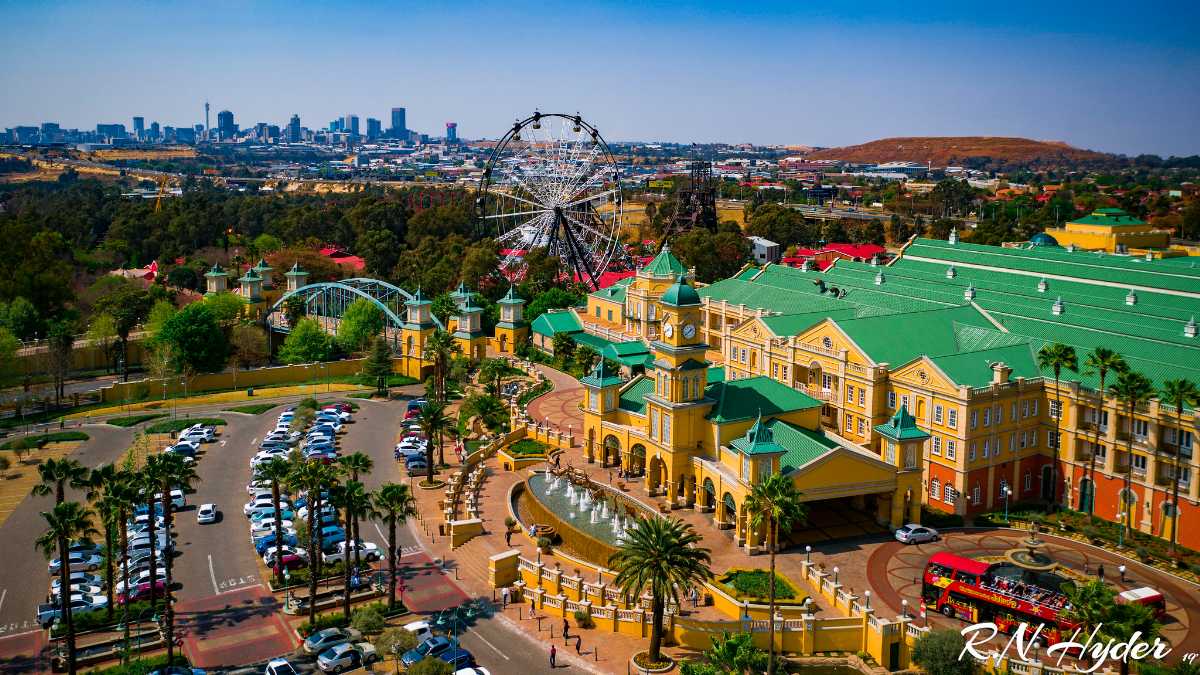10 Easy Facts About Johannesburg North Attractions Explained
Table of ContentsThe Johannesburg North Attractions IdeasThe Only Guide for Johannesburg North AttractionsJohannesburg North Attractions - An OverviewJohannesburg North Attractions - The FactsOur Johannesburg North Attractions IdeasAn Unbiased View of Johannesburg North Attractions
The city expanded on the edge of the Witwatersrand Main Reef, a subterranean stratum of gold-bearing quartz-silica conglomerate that arcs for hundreds of miles below the Highveld - Johannesburg North attractions. Most of the gold mines in the city ceased operation in the 1970s, but in its day the Witwatersrand gold industry accounted for even more than 40 percent of the globe's yearly gold production.Johannesburg has a warm environment. Summer season temperatures balance concerning 75 F (24 C); winter temperature levels balance concerning 55 F (13 C) and only sometimes dip below freezing. The city delights in about 8 hours of sunshine each day in both winter and summer. Rainfall averages concerning 28 inches (700 millimetres) per year, yet the complete differs substantially from year to year.
What rainfall the city receives drops practically exclusively in the summer season months, frequently in stunning late-afternoon electric tornados., where many locals still count on coal for fuel.

The Greatest Guide To Johannesburg North Attractions
The balance of the city is inhabited by whites. Holiday accommodation differs in character and high quality. Soweto is well-known for its countless rows of municipally developed, two-room matchbox homes, yet it also has a couple of thriving territories as well as bristling squatter camps, where tens of thousands live without water, electrical energy, or cleanliness centers.
Physical development, although somewhat restricted by transportation, proceeded quickly as migration to South Africa, and Johannesburg in specific, increased dramatically. This trouble was resolved in the 1930s when the auto was introduced in automation to South Africa. Autos were, essentially, confined to the well-off, and permitted them to move to the north of the city and commute right into the centre.
Many bad residential areas were combined, with bad blacks and whites cohabiting, although the wealthy suburban areas were generally reserved link for whites. This changed with the election of the National Party in the 1948 elections, who began to formalise the straight from the source system understood as racism. Racism officially marked which suburban areas each race can stay in under the Team Locations Act.
The previous system of eleven phoned number regions was reorganised in 2006. Marshalltown, as seen from the top of the Carlton Centre. The M1 and M2 run behind the structures, and the southern suburban areas expand past the freeway border. The central city of Johannesburg lies within the city's Region F. The number of people living in the inner city on an informal basis is unidentified, as many are prohibited immigrants. The unemployment, education, and age profiles of the area are all unidentified, due to the difficulty Check This Out of acquiring reputable information regarding the location.
Not known Incorrect Statements About Johannesburg North Attractions
Yeoville and Bellevue have a mix of house buildings and single household devices on small lots. The area lies on a mountainous divide that runs from eastern to west. The most obvious geographical feature is Observatory Ridge, which is named for the big observatory situated on it. The leisure spaces are no more utilized, because of safety and security problems.

Not known Details About Johannesburg North Attractions
R. Tambo International Airport). The eastern suburban areas are several of the earliest areas of Johannesburg, there are big areas of Jewish and various other European backgrounds, the bulk of the population is English talking. There are three golf links as well as a number of protected ridges with viewsites. There are a number of strong and up-market entertainment and buying areas in the east such as the Eastgate Shopping Centre and the Greenstone shopping centre.
Originally constructed to house male migrant workers, many have been improved as residences for couples and family members. The suburb was not historically enabled to produce work centres within the location, so nearly all of its locals are commuters to other parts of the city.
Johannesburg North Attractions Fundamentals Explained
The property areas in the northern suburbs are mostly official, with no significant locations of informal housing, or housing that does not have a long-term structure. This is a recognized location, there is a trend of land use change from property to industrial, specifically along major arterial roads and around recognized nodes.
The location is well linked to road networks, particularly along the north-south axis developed by the M1 and N1. Roadways to the eastern and west are less well developed, as there are no freeways taking a trip because direction. Towards the northern border of the city, the thickness of development decreases, leaving large areas of primitive land around Midrand.
Johannesburg North Attractions for Dummies
, which is located on a hillside ignoring the inner city and Hillbrow.
Comments on “The smart Trick of Johannesburg North Attractions That Nobody is Discussing”